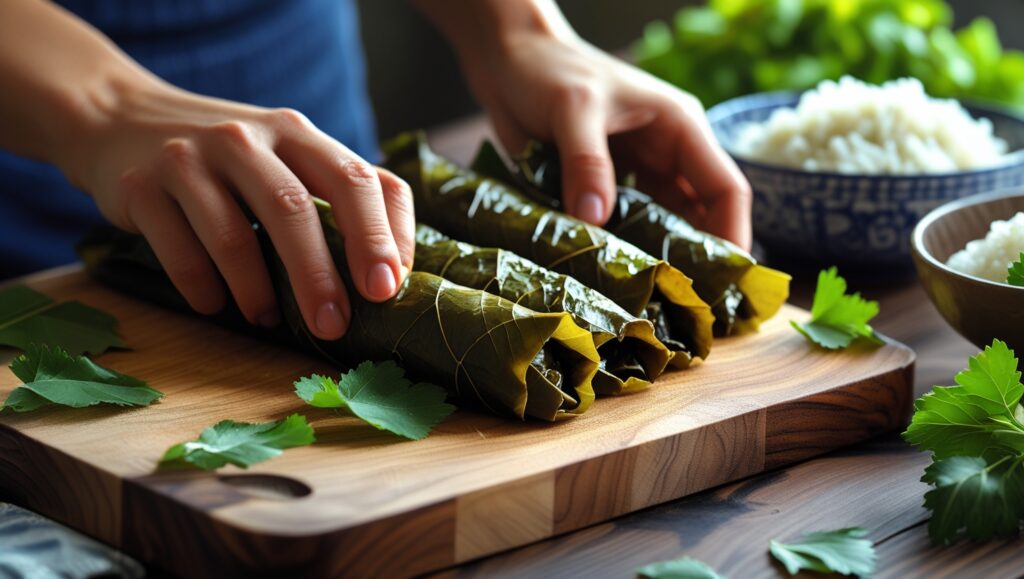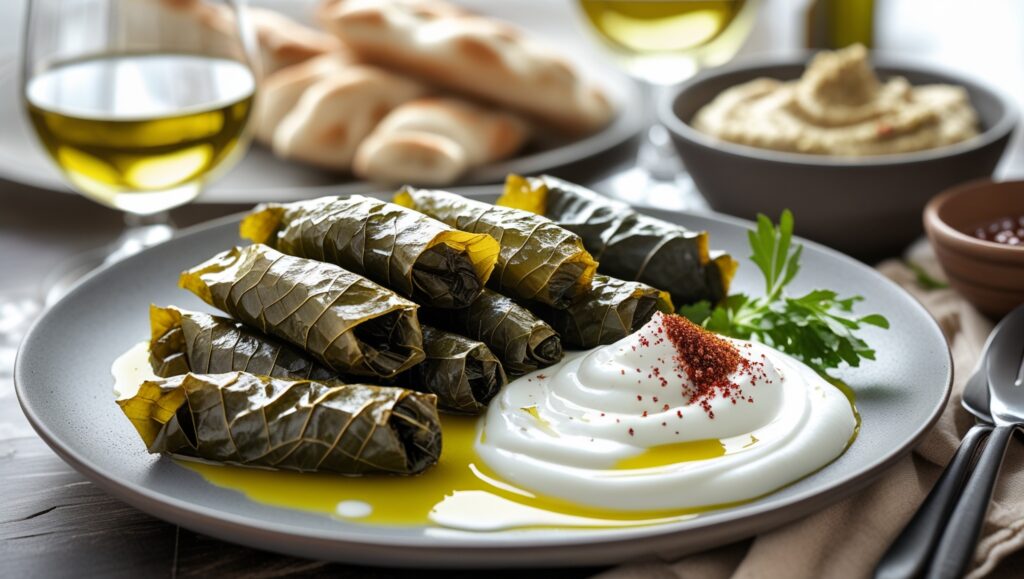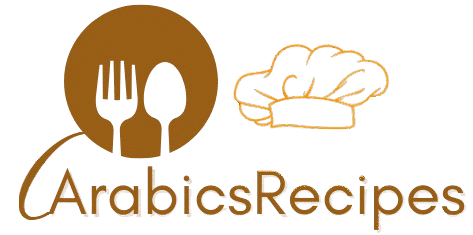Nothing beats the comforting taste of Stuffed Grape Leaves (Dolma)—a dish that has been cherished across cultures for centuries. These delicious little rolls, made with tender grape leaves wrapped around a flavorful filling, are a staple in Mediterranean, Middle Eastern, and Balkan cuisines. Whether you prefer them stuffed with rice, fresh herbs, and spices or filled with a savory blend of meat and grains, dolma is a dish that satisfies in every bite.
In this guide, we’ll explore everything you need to know about Stuffed Grape Leaves (Dolma). We’ll dive into its history, regional variations, and essential ingredients. Then, we’ll walk you through a step-by-step recipe, covering preparation techniques, cooking methods, and expert tips. Whether you’re a seasoned cook or a first-timer, by the end of this article, you’ll be able to make perfectly rolled, mouthwatering dolmas with ease.
Introduction to Stuffed Grape Leaves (Dolma)
What Are Stuffed Grape Leaves (Dolma)?
Stuffed Grape Leaves (Dolma)—often referred to as dolmades, sarma, or warak enab—is a classic dish where grape leaves are rolled around a savory filling. The filling can be vegetarian, made with rice, onions, herbs, and spices, or it can contain ground meat, often mixed with rice, tomatoes, and aromatic seasonings.
Dolma is typically cooked slowly, allowing the flavors to meld together, resulting in tender, juicy bites bursting with Mediterranean goodness. Depending on the region, it can be served warm or cold, drizzled with olive oil, lemon juice, or yogurt-based sauces.
The Cultural Significance of Dolma Across Different Cuisines
This dish isn’t just food—it’s a symbol of tradition and hospitality. Across different cultures, Stuffed Grape Leaves (Dolma) appears in family gatherings, festive celebrations, and everyday meals.
- In Greece, dolmadakia is a popular appetizer, usually served with a side of tzatziki sauce.
- In Turkey, sarma refers to any stuffed and rolled dish, with variations featuring meat, nuts, and spices.
- In Lebanon and the Middle East, warak enab is often enjoyed with a squeeze of fresh lemon and paired with yogurt.
Regardless of where it’s made, dolma remains a beloved comfort food, passed down from generation to generation.
Why Dolma is a Timeless Dish
So, why has Stuffed Grape Leaves (Dolma) stood the test of time? Here’s why:
– Simple Ingredients, Big Flavor – You only need grape leaves, rice, herbs, and spices, yet the result is incredibly flavorful.
– Versatile & Customizable – It can be vegetarian or meat-based, spicy or mild, served hot or cold.
– Healthy & Nutritious – Grape leaves are packed with antioxidants, and the dish itself is rich in fiber, vitamins, and healthy fats.
– Perfect for Any Occasion – Whether as a starter, main course, or side dish, dolma fits every meal and gathering.
Now that we’ve covered the basics, let’s dive into the key ingredients and variations that make dolma truly special!
Key Ingredients and Variations
Common Ingredients for Traditional Dolma
A great Stuffed Grape Leaves (Dolma) recipe starts with quality ingredients. Here’s what you’ll typically need:
- Grape Leaves – These can be fresh or jarred. Fresh leaves need blanching, while jarred ones should be rinsed well to remove excess brine.
- Rice – Short or medium-grain rice works best, as it absorbs flavors and remains tender after cooking.
- Herbs & Spices – Fresh parsley, dill, mint, and onion add vibrant flavor. Spices like cumin, cinnamon, and allspice give depth.
- Lemon Juice & Olive Oil – These add richness and acidity, balancing the flavors beautifully.
Meat vs. Vegetarian Dolma: What’s the Difference?
- Vegetarian Dolma (Dolmadakia) – Typically stuffed with rice, onions, pine nuts, currants, and fresh herbs. It’s lighter, refreshing, and often served cold.
- Meat-Based Dolma – Includes ground beef, lamb, or a mix of both combined with rice and spices. It’s heartier, richer, and served warm.
Regional Variations: Greek, Lebanese, and Turkish Dolma
- Greek Dolmadakia – Usually vegetarian, often paired with tzatziki or lemon sauce.
- Lebanese Warak Enab – Features ground lamb, rice, and warm spices, with a tangy, lemony broth.
- Turkish Sarma – Sometimes includes tomatoes and currants, with a slightly sweet and savory taste.
Each version has its unique twist, but they all share the same comforting, homemade charm.
Now that we know the ingredients, let’s move on to how to make dolma step by step!
Step-by-Step Guide to Making Stuffed Grape Leaves (Dolma)

How to Select and Prepare Grape Leaves
The quality of grape leaves makes a big difference in flavor and texture. Here’s how to prepare them:
- Fresh Leaves: Rinse them well, then blanch in hot water for 30-60 seconds to soften.
- Jarred Leaves: Drain and rinse to remove excess salt and brine, then soak in warm water for a few minutes.
Once prepped, pat them dry before rolling.
Making the Perfect Filling: Balancing Flavors and Textures
- Sauté onions and garlic in olive oil until fragrant.
- Add rice and cook for a few minutes to absorb the flavors.
- Mix in fresh herbs, pine nuts, and spices (for vegetarian dolma) OR add ground meat for a heartier version.
- Season well with salt, pepper, and a splash of lemon juice.
Let the mixture cool slightly before rolling—it makes stuffing easier!
The Rolling Technique: How to Wrap Grape Leaves Like a Pro
- Lay a grape leaf shiny side down on a flat surface.
- Add a spoonful of filling in the center near the stem.
- Fold the sides inward, then roll tightly from the bottom up.
- Repeat until all leaves are stuffed!
Arrange them seam-side down in a pot to keep them secure while cooking.
Now that we’ve rolled our dolmas, in the next section, we’ll cover the best cooking methods for perfect texture!
In this section, we’ll cover the best ways to cook Stuffed Grape Leaves (Dolma) and how to serve them with the perfect accompaniments for an authentic dining experience.
Cooking Methods for the Best Dolma
Stovetop Simmering: The Classic Approach
The traditional way to cook Stuffed Grape Leaves (Dolma) is by simmering them in a pot with flavorful liquid. This method ensures that the grape leaves become tender and the filling absorbs the aromatic broth.
How to Cook Dolma on the Stovetop:
- Layer the bottom of a heavy pot with unused grape leaves to prevent burning.
- Arrange stuffed grape leaves tightly in the pot, seam-side down.
- Add liquid – Use a mix of water, broth, olive oil, and lemon juice for extra flavor.
- Place a plate on top of the dolmas to keep them from unraveling.
- Simmer for 45-60 minutes on low heat until the rice is fully cooked.
This method delivers soft, flavorful dolmas that melt in your mouth!
Baking Dolma: A Lesser-Known Alternative
Want a slightly firmer texture? Try baking!
- Preheat oven to 350°F (175°C).
- Place dolmas in a baking dish and cover with broth.
- Cover with foil and bake for about 1 hour.
Baking gives the grape leaves a deeper flavor and a slightly crisper texture than stovetop dolma.
Instant Pot and Slow Cooker Versions
Short on time? The Instant Pot makes cooking Stuffed Grape Leaves (Dolma) quicker and easier.
- Instant Pot: Cook on manual high pressure for 20 minutes, then let the pressure release naturally.
- Slow Cooker: Set on low for 4-5 hours, ensuring the dolmas are fully covered in liquid.
Both methods save time while keeping the flavors rich and deep!
Serving and Pairing Stuffed Grape Leaves (Dolma)

Now that your dolmas are perfectly cooked, let’s talk about how to serve them for maximum enjoyment!
Traditional Side Dishes and Dips
Pairing Stuffed Grape Leaves (Dolma) with classic Mediterranean sides makes for a well-balanced meal. Here are some must-try accompaniments:
– Tzatziki Sauce – A creamy, garlicky yogurt sauce that adds refreshing contrast.
– Hummus – A smooth, nutty dip that pairs perfectly with warm dolma.
– Pita Bread – Great for scooping up extra sauce and flavors.
– Greek Salad – Crisp cucumbers, tomatoes, and feta balance out the richness of the dolma.
For a full Middle Eastern spread, try serving dolma with this delicious Greek salad with feta.
Best Drinks to Accompany Dolma
Pair your dolma feast with these classic beverage options:
🍷 White Wine – A crisp Sauvignon Blanc or Riesling complements the lemony notes.
🍋 Ayran (Yogurt Drink) – A refreshing, savory drink that balances the herbs and spices.
🫖 Mint Tea – A warm, soothing option that enhances the Mediterranean flavors.
Plating and Presentation Tips for Special Occasions
For a beautiful, inviting plate, try these serving tips:
- Drizzle with olive oil and garnish with fresh herbs before serving.
- Arrange dolmas in a circular pattern on a plate with lemon wedges.
- Serve warm or cold, depending on preference.
Whether you’re making a quick weeknight meal or an elegant dinner spread, Stuffed Grape Leaves (Dolma) always steals the show!
We’ve covered how to prepare, cook, and serve Stuffed Grape Leaves (Dolma), but did you know this dish is also packed with nutritional benefits? Thanks to its wholesome ingredients like grape leaves, rice, olive oil, and herbs, dolma can be a healthy addition to your diet.
Health Benefits of Stuffed Grape Leaves (Dolma)
Nutritional Breakdown of Dolma
Stuffed Grape Leaves (Dolma) isn’t just delicious—it’s nutritious too! Let’s look at what makes this dish a healthy choice:
– Grape Leaves – Rich in antioxidants, fiber, and vitamins A, C, and K, they support immune health and digestion.
– Olive Oil – A key ingredient in dolma, olive oil is packed with heart-healthy monounsaturated fats.
– Rice – Provides complex carbohydrates that offer steady energy throughout the day.
– Herbs & Spices – Fresh parsley, mint, and dill bring anti-inflammatory and digestive benefits.
– Protein (if using meat) – Lean ground meat like beef or lamb adds iron, zinc, and essential amino acids.
Are Stuffed Grape Leaves Good for Weight Loss?
Yes! Dolma can be weight-loss-friendly when made with the right balance of ingredients. Here’s why:
- Low in Calories (When Baked or Steamed) – Using less oil and skipping heavy sauces keeps dolma light and healthy.
- Rich in Fiber – The grape leaves and herbs help with digestion and keeping you full longer.
- Packed with Healthy Fats – Olive oil provides good fats that help with satiety and energy.
For a lighter version, try baking instead of frying and swap white rice for quinoa or cauliflower rice.
How Dolma Fits into the Mediterranean Diet
The Mediterranean diet is one of the healthiest in the world, and dolma fits right in! It emphasizes:
– Plant-based foods – Dolma is packed with herbs, veggies, and whole grains.
– Healthy fats – Olive oil provides essential nutrients for heart health.
– Balanced portions – Dolma offers a perfect balance of protein, carbs, and fats.
Eating dolma alongside a fresh salad and lean protein makes for a well-rounded, healthy meal!
Common Mistakes and Troubleshooting
Even the best cooks can run into problems when making Stuffed Grape Leaves (Dolma). If your dolma isn’t turning out soft, flavorful, and perfectly rolled, don’t worry—we’ve got you covered!
Why Do Grape Leaves Turn Tough?
If your grape leaves are chewy or too firm, here’s what might have gone wrong:
- Skipping the blanching step – Fresh grape leaves need to be briefly boiled to soften.
- Not rinsing jarred leaves – Too much brine can toughen the leaves, so soak them first.
- Cooking at too high heat – Dolma should be slow-cooked on low heat to soften properly.
How to Prevent Dolma from Falling Apart
There’s nothing worse than dolma unrolling while cooking! Here’s how to keep them intact:
– Roll tightly but not too tight – The rice expands while cooking, so leave a little room.
– Place them snugly in the pot – Arrange seam-side down and stack them tightly.
– Weigh them down – Use a plate or lid to prevent movement while simmering.
Fixing an Overly Salty or Bland Filling
Getting the right seasoning is key for flavorful dolma. If it’s too salty, try these tricks:
- Add a squeeze of lemon juice to balance the saltiness.
- Rinse the grape leaves well before using.
- Use low-sodium broth instead of regular saltwater.
For bland dolma, simply add more fresh herbs, lemon zest, or a pinch of cinnamon for depth of flavor!
With these troubleshooting tips, you’ll be rolling and cooking perfect dolma every time!
Up next, we’ll answer your most frequently asked questions about Stuffed Grape Leaves (Dolma).
By now, we’ve covered everything from ingredients and preparation to cooking methods and common mistakes. But if you still have a few lingering questions, don’t worry—we’ve got you covered! In this section, we’ll answer some of the most frequently asked questions about Stuffed Grape Leaves (Dolma).
FAQs – Everything You Need to Know About Dolma
1. Can You Use Fresh Grape Leaves Instead of Jarred Ones?
Yes, you can! Fresh grape leaves work great, but they require a bit more preparation. Simply:
- Rinse them well to remove dirt.
- Blanch in boiling water for 30-60 seconds to soften them.
- Drain and cool before using.
Jarred leaves, on the other hand, are already pre-softened, but they must be rinsed to remove excess brine.
2. How Long Do Stuffed Grape Leaves (Dolma) Last in the Fridge?
Dolma stays fresh for up to 5 days when stored in an airtight container in the fridge. To keep them moist and flavorful:
– Drizzle with olive oil or lemon juice before refrigerating.
– Keep them covered to prevent drying out.
3. Can You Freeze Dolma for Later?
Absolutely! To freeze dolma:
- Place them in a single layer in a freezer-safe container.
- Separate layers with parchment paper to prevent sticking.
- Freeze for up to 3 months.
To reheat, simply steam or microwave until warm!
4. What’s the Best Rice to Use for Stuffed Grape Leaves (Dolma)?
Short or medium-grain rice works best because it absorbs flavor well and stays tender. Some great choices include:
– Arborio Rice – Perfect for creamy, soft dolma.
– Calrose Rice – A great all-purpose option.
– Basmati Rice – Adds a fragrant, slightly firmer texture.
Conclusion – A Timeless Dish for Every Occasion
Stuffed Grape Leaves (Dolma) isn’t just a meal—it’s a tradition. Across cultures, this dish has been a symbol of family, celebration, and good food for centuries. Whether you enjoy it warm or cold, vegetarian or with meat, dolma is a dish that always delivers on flavor.
Why You Should Try Making Dolma at Home
– Customizable – You can adjust the ingredients to fit your diet and taste.
– Healthy & Nutritious – Packed with fiber, protein, and antioxidants.
– Great for Meal Prep – It stores well, making it perfect for busy days.
– A Crowd-Pleaser – Serve it at gatherings, and it’s sure to impress!
Final Thoughts
If you’ve never made Stuffed Grape Leaves (Dolma) before, now’s the time to try! With this guide, step-by-step tips, and troubleshooting hacks, you can create authentic, delicious dolma right in your own kitchen.
Looking for more Mediterranean-inspired dishes? Check out this delicious Greek salad with feta to serve alongside your dolma!
Enjoy cooking, and happy rolling!

